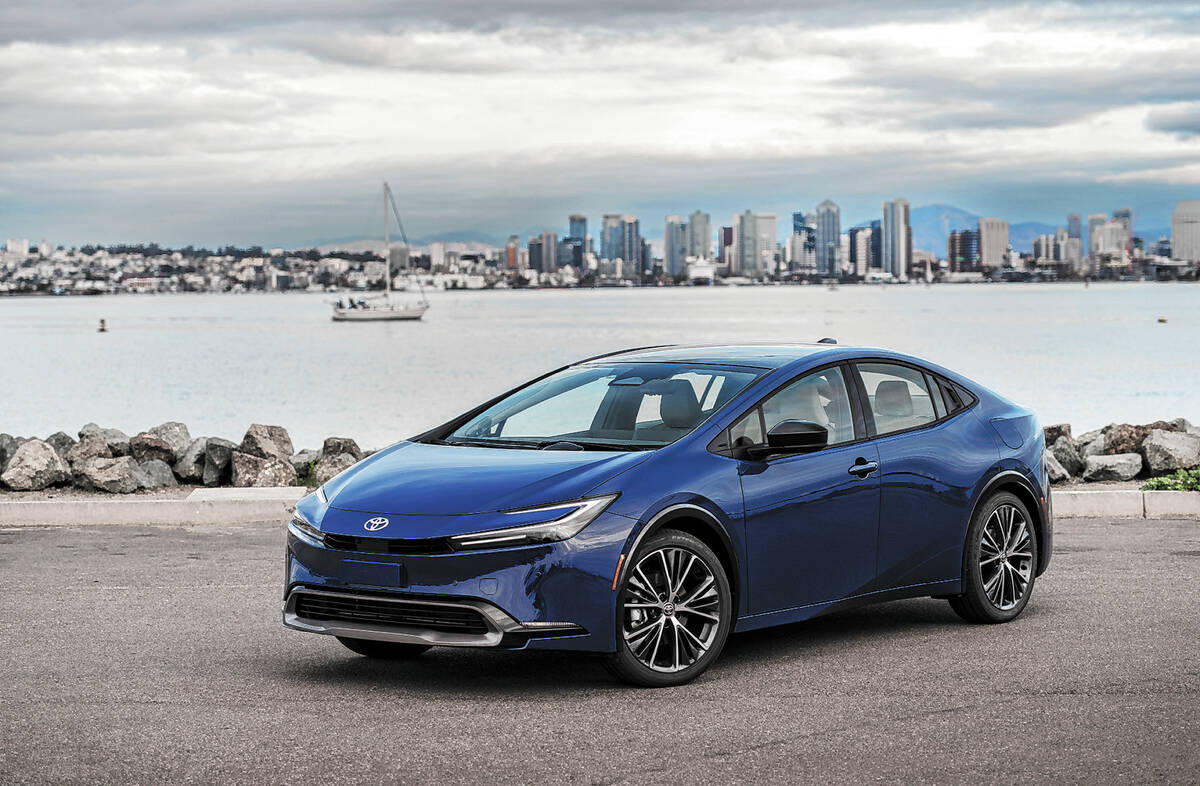For this vehicle and others, visit Findlay Automotive Group’s expansive inventory here.
Nothing less than transformative. That perfectly describes the 2023 Toyota Prius.
This gasoline-electric hybrid — now in its fifth iteration — has come a long way since arriving for the 2001 model year.
Back then, the Prius and the two-seat Honda Insight hatch were the only available electrically assisted vehicles on the market. The public largely viewed them as novelties.
While the Insight would eventually morph into a relatively average-looking small car, each generation of the Prius stood out and, to be charitable, in a mostly unusual way.
That changed dramatically for the 2023 model. From stem to stern, the Prius is a strikingly handsome hatchback and is easily the most attractive vehicle in Toyota’s sedan lineup.
Gone are the awkwardly shaped body panels, especially the winged-looking rear fenders. The eye-catching shape of the new car has smooth, rounded features interrupted only by a small rear spoiler.
For the interior, Toyota didn’t completely depart from the unusual. The oddly shaped driver information screen is perched atop the dashboard and appears partially blocked by the steering wheel. The previous screen was a thin strip centered directly below the windshield. Beside it is an 8- or available 12.3-inch touch screen with voice control plus Apple CarPlay and Android connectivity.
The platform comes from the previous model, so length and width are nearly identical, although the distance between the distance between the front and rear wheels is extended by about 2 inches.
The roof height is about 2 inches lower than before, which translates into a slight loss in stowage space behind the back seat. It’s a fair compromise considering the car’s appealing silhouette.
As before, the Prius comes in two distinct flavors: regular and plug-in Prius Prime. The regular Prius has a 2.0-liter four-cylinder engine rated at 150 horsepower and 139 pound-feet of torque. The electric motor increases net output to 194 horsepower for the front-wheel-drive model. That’s a considerable gain over the previous 121-horsepower FWD model.
The dual-motor all-wheel-drive Prius is rated at 196 horsepower.
According to Toyota, the FWD model can hit 60 mph from rest in 7.2 seconds. The AWD model can do it in 7.0. The 2022 Prius took 9.8 seconds.
Prius scores an estimated 57 mpg in combined city/highway driving, compared with the previous 56-mpg number.
For the front-wheel-drive Prius Prime, the same 2.0-liter four-cylinder is linked to a more energy-dense lithium ion battery pack. Output is 220 horsepower, which is nearly 100 more than the 2022 Prime. The stated zero-to-60-mph time is 6.6 seconds.
The Prime’s key advantage is the ability to travel in electric-only mode for nearly 40 miles (as claimed by Toyota). The previous Prime was rated for 25 miles.
The base LE Prius, at $28,550, is light on content but it does come with a good helping of dynamic safety technologies such as front emergency braking, inattentive-driver alert and lane-departure warning.
The top-end Limited trim gets the larger touch screen, heated and ventilated power-adjustable front seats, power-opening hatchback, fixed-glass roof and premium eight-speaker JBL-brand audio system.
The three Prius Prime trims offer similar equipment-level choices, but optional for the up-level XSE Premium is a solar roof panel that helps recharge the battery pack.
With great looks and fuel efficiency, Prius returns as one of 10 Toyota hybrid vehicles, along with two plug-in-hybrid derivatives. And with just one battery-electric model currently in the fleet — the new bZ4X wagon/hatchback — it would appear Toyota is counting on models such as the Prius to dominate the market in the coming years.








